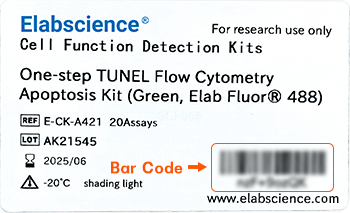Recombinant Bcl2 Monoclonal Antibody (E-AB-81425)

For research use only.
| Verified Samples |
Verified Samples in WB: Jurkat, Hela Verified Samples in IHC: Human breast cancer |
| Dilution | WB 1:500-1:1000, IHC 1:20-1:200 |
| Isotype | IgG |
| Host | Rabbit |
| Reactivity | Human |
| Applications | WB, IHC-P |
| Clonality | Rabbit Monoclonal |
| Immunogen | A synthetic peptide of human Bcl-2 |
| Abbre | Bcl2 |
| Synonyms | 2, AW986256, Apoptosis regulator Bcl 2, Apoptosis regulator Bcl-2, Apoptosis regulator Bcl2, B cell CLL/lymphoma 2, B cell leukemia/lymphoma 2, B-cell, BCL2, Bcl-2, Bcl2, C430015F12Rik, D630044D05Rik, D830018M01Rik, Leukemia/lymphoma, Oncogene B-cell leukemia 2, PPP1R50 |
| Swissprot | |
| Calculated MW | 26 kDa |
| Observed MW |
26 kDa
Western blotting is a method for detecting a certain protein in a complex sample based on the specific binding of antigen and antibody. Different proteins can be divided into bands based on different mobility rates. The mobility is affected by many factors, which may cause the observed band size to be inconsistent with the expected size. The common factors include: 1. Post-translational modifications: For example, modifications such as glycosylation, phosphorylation, methylation, and acetylation will increase the molecular weight of the protein. 2. Splicing variants: Different expression patterns of various mRNA splicing bodies may produce proteins of different sizes. 3. Post-translational cleavage: Many proteins are first synthesized into precursor proteins and then cleaved to form active forms, such as COL1A1. 4. Relative charge: the composition of amino acids (the proportion of charged amino acids and uncharged amino acids). 5. Formation of multimers: For example, in protein dimer, strong interactions between proteins can cause the bands to be larger. However, the use of reducing conditions can usually avoid the formation of multimers. If a protein in a sample has different modified forms at the same time, multiple bands may be detected on the membrane. |
| Cellular Localization | Mitochondrion outer membrane. Nucleus membrane. Endoplasmic reticulum membrane. |
| Concentration | 300 μg/mL |
| Buffer | 50mM Tris-Glycine(pH 7.4), 0.15M NaCl, 40% Glycerol, 0.05% stabilizer and 0.05% protective protein. |
| Purification Method | Affinity Purified |
| Research Areas | Cancer, Cell Biology, Metabolism, Signal Transduction |
| Clone No. | R03-9E1 |
| Conjugation | Unconjugated |
| Storage | Store at -20°C Valid for 12 months. Avoid freeze / thaw cycles. |
| Shipping | The product is shipped with ice pack,upon receipt,store it immediately at the temperature recommended. |
| background | BCL2 belongs to the Bcl-2 family. It suppresses apoptosis in a variety of cell systems including factor-dependent lymphohematopoietic and neural cells. BCL2 regulates cell death by controlling the mitochondrial membrane permeability. It appears to function in a feedback loop system with caspases. BCL2 inhibits caspase activity either by preventing the release of cytochrome c from the mitochondria and/or by binding to the apoptosis-activating factor (APAF-1). |
Other Clones
{{antibodyDetailsPage.numTotal}} Results
-
{{item.title}}
Citations ({{item.publications_count}}) Manual MSDS
Cat.No.:{{item.cat}}
{{index}} {{goods_show_value}}
Other Formats
{{formatDetailsPage.numTotal}} Results
Unconjugated
-
{{item.title}}
Citations ({{item.publications_count}}) Manual MSDS
Cat.No.:{{item.cat}}
{{index}} {{goods_show_value}}
-
IF:{{item.impact}}
Journal:{{item.journal}} ({{item.year}})
DOI:{{item.doi}}Reactivity:{{item.species}}
Sample Type:{{item.organization}}
-
Q{{(FAQpage.currentPage - 1)*pageSize+index+1}}:{{item.name}}





